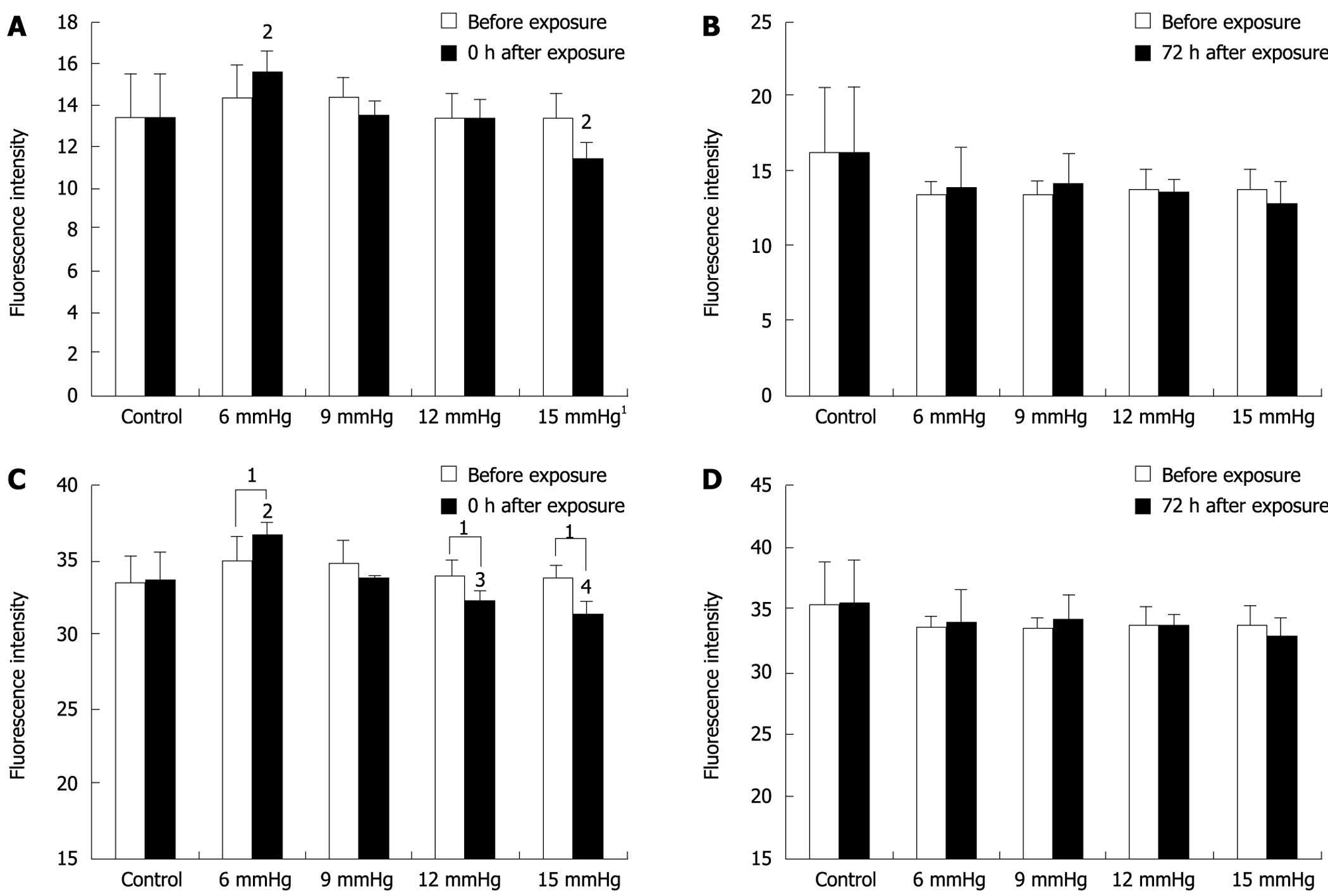Copyright
©2009 The WJG Press and Baishideng.
World J Gastroenterol. Jun 14, 2009; 15(22): 2714-2722
Published online Jun 14, 2009. doi: 10.3748/wjg.15.2714
Published online Jun 14, 2009. doi: 10.3748/wjg.15.2714
Figure 5 Results of invasion assay.
A: SW1116, 0 h after exposure; B: SW1116, 72 h after exposure; C: Lovo, 0 h after exposure; D: Lovo, 72 h after exposure. A: 1At 0 h after exposure to 15 mmHg CO2 insufflation, invasive cells decreased significantly compared to the cells prior to exposure (P = 0.019); 2At 0 h after exposure, invasion of the 6 mmHg or the 15 mmHg group was significantly different from the other pressure groups (P < 0.05). B: The invasion fluorescence intensities of SW1116 before and 72 h after exposure to CO2 insufflation were not significantly different (P > 0.05). Seventy two hours after the CO2 insufflation, there were no significant differences between the various insufflation pressure groups (P > 0.05); C: 1At 0 h after exposure to 15 mmHg, 12 mmHg or 6 mmHg CO2 insufflation, invasive cells of Lovo decreased significantly compared to the cells prior to exposure (P = 0.008, P = 0.0045, P = 0.043); 2At 0 h after exposure, cell invasion at 6 mmHg was significantly different from the other pressure groups (P < 0.01); 3At 0 h after exposure, cell invasion in the 12 mmHg group was significantly less than the 9 mmHg group (P < 0.05); 4At 0 h after exposure, cell invasion in the 15 mmHg group was significantly less than the 6 and 9 mmHg groups (P < 0.01); D: The invasion fluorescence intensities of Lovo before and 72 h after exposure to CO2 insufflation were not significantly different (P > 0.05). Seventy two hours after CO2 insufflation, there were no significant differences between the various insufflation pressure groups (P > 0.05).
- Citation: Ma JJ, Feng B, Zhang Y, Li JW, Lu AG, Wang ML, Peng YF, Hu WG, Yue F, Zheng MH. Higher CO2-insufflation pressure inhibits the expression of adhesion molecules and the invasion potential of colon cancer cells. World J Gastroenterol 2009; 15(22): 2714-2722
- URL: https://www.wjgnet.com/1007-9327/full/v15/i22/2714.htm
- DOI: https://dx.doi.org/10.3748/wjg.15.2714









